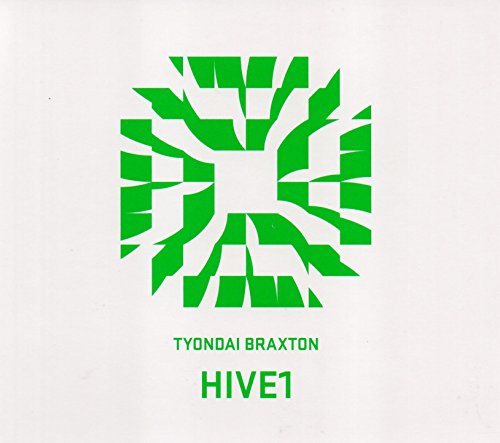
Tyondai Braxton
Hive1
Release Date: May 12, 2015
Genre(s): Electronic, Club/Dance
Record label: Nonesuch
Music Critic Score
How the Music Critic Score works
Buy Hive1 from Amazon
Album Review: Hive1 by Tyondai Braxton
Fairly Good, Based on 8 Critics
Based on rating 8/10
After leaving Battles, Tyondai Braxton focused on more rarefied projects: Central Market was an ambitious orchestral work, while its follow-up HIVE1 debuted as an installation at the Guggenheim Museum. However, these delightfully mercurial pieces -- which were composed for two modular synthesizers and three percussionists -- often make both Central Market and Braxton's work with Battles feel downright mainstream. The way he plays with and contrasts circuits and wood harks back to his early days as a composer, as well as the early days of electronic music: "K2"'s alien field recordings recall Louis & Bebe Barron's Forbidden Planet score, while "Gracka"'s arpeggios and layers of percussion suggest an exploded version of Raymond Scott's Soothing Sounds for Baby pieces, right down to the way certain passages sound like a marching cadence for army ants.
Based on rating 3.5/5
Lucky for us, music isn’t just milk and cookies. It’s needles and pins and endlessly intricate conversations that exist for their own curious punctuation. There are rhythmic pockets and melodic fillings, and there are endless not-so-secret passages that give one’s life shape and lasting substance. Much like Sam Prekop’s last two records, HIVE1 is a sequence of bizarre incursions that are abstract but endlessly blooming, with refined, buzzy textures.
Based on rating 7/10
To distil a multi-sensory, mixed media art performance such that only a single element of the original concept remains, and to have the husk be just as engaging as the entirety, is not a feat for the faint of heart. Former Battles member Tyondai Braxton has done just that with HIVE1, his first solo effort for the Nonesuch imprint. Originally developed as HIVE — a combination architectural installation and group performance that debuted at the Guggenheim in 2013 — the work eventually evolved into its present form, an album that drifts conceptually, its sonic terrain rife with transitions and mixed genre signifiers that are never entirely deployed.
Based on rating 6.9/10
In recent years, we've seen plenty of indie-world talents—like St. Vincent's Annie Clark, the National's Bryce Dessner, and Radiohead's Jonny Greenwood—crossing over into the realm of contemporary classical music. (Dessner and Arcade Fire instrumentalist Richard Reed Parry are even working on a collaborative piece for the New York Philharmonic, to be played late in 2015.
Based on rating C+
During a February 2014 interview with FBi Radio, Tyondai Braxton described his forthcoming full-length effort as: “[an opportunity] to present this other side of myself.” Since parting ways with Battles in 2010, Braxton’s focus has been dominated largely by “high art,” and it was a commissioned work by the Guggenheim’s Works & Process that served as the impetus for Braxton’s Nonesuch debut, HIVE1. Performance and conversation stand as pillars to the organization’s mission of artistic creation, and the live element is fundamental to wholly appreciating this multi-sensory narrative. Alone, the electronic patchwork suffers beneath its own weighty veil.
Based on rating 5/10
Battles are scientists. Mad scientists, yes, but everything they made was finely tuned, measured down to the millimeter. Live, the band wasn’t afraid to blast eardrums, but it was precise. Tyondai Braxton, a former member of Battles, is still experimenting. His pedigree isn’t just from Battles ….
Based on rating 4/10
Well, this is a new one. I honestly can't get through this album in one uninterrupted sitting. "People won't be people when they hear this sound!, Tyondai Braxton once proclaimed, his vocals distorted, his glee nonetheless obvious. While serving as frontman of Battles, he combined challenging textures with pop sensibility in such a fashion that the results were immediately engaging and ultimately irresistible.
Opinion: Very Good
I crashed my car to “Opening Bell”, the ADHD cartoon symphony that begins Tyondai Braxton’s 2009 Central Market. Not on purpose - the official record shows that they ran into me - but it definitely played some role, that bricolage of lilting strings and mischievous piano inviting mishap and shattered glass and broken metal, like Kubrick’s droogs fighting to Rossini. That album sounded like nothing else being released at that time, its compositions often breathtaking in their complexity and ambition, at once comic, swooning and terrifying and revelling in its own balletic absurdity.
'Hive1'
is available now

